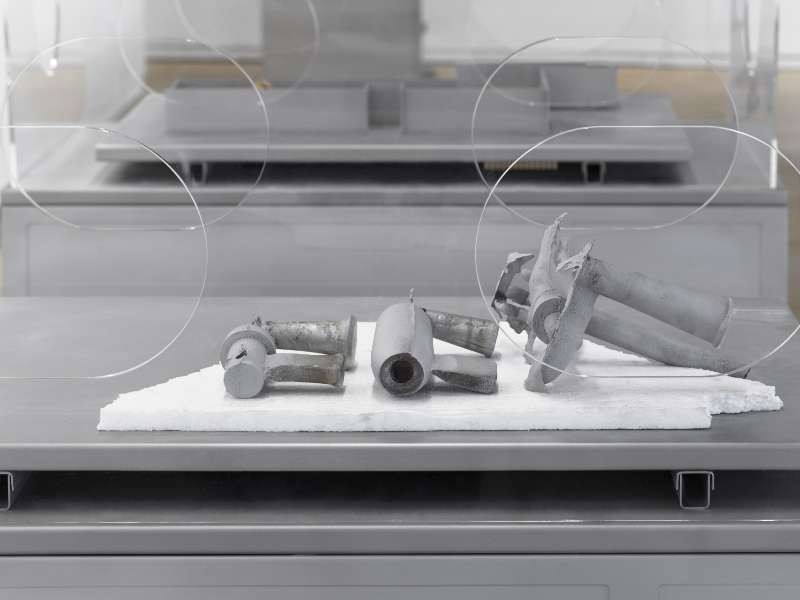Tarik Kiswanson
13 Mar - 21 Apr 2018
TARIK KISWANSON
13 March – 21 April 2018
Curated by Jesi Khadivi
Tarik Kiswanson’s artistic practice—which encompasses sculpture, performance, and poetry— evinces an engagement with the poetics of métissage: a means of writing and surviving between multiple conditions and contexts. This crossroad, as cultural studies scholar Paul Gilroy writes, “is a special location where unforeseen, magical things can happen.” The reduction, refraction, multiplication and disintegration of form and language in Kiswanson’s work evoke the contingency of memory and polyphonic hybridity.
The artist’s practice to date has taken up questions of displacement and interstitiality that specifically relate to the context of what is lost, and what is gained, in the first generation of migration. His exhibition at Fondation d’entreprise Ricard expands this inquiry to examine the human condition more broadly, the most fundamental borders—birth and death.
Conceived as a “narrative machine,” the exhibition Come, come, come of age, the artist’s first solo institutional exhibition in France, presents a sonic-sculptural installation. Kiswanson embarks on a new series of sculptures for the show, which create a scenography for a sound work: poems in the form of a deconstructed interview that unfolds between the artist and a child. Their voices proffer fragmented reflections on questions of desire, corporality, birth, cycles of life-and-death, coming of age, and the construction of identity.
13 March – 21 April 2018
Curated by Jesi Khadivi
Tarik Kiswanson’s artistic practice—which encompasses sculpture, performance, and poetry— evinces an engagement with the poetics of métissage: a means of writing and surviving between multiple conditions and contexts. This crossroad, as cultural studies scholar Paul Gilroy writes, “is a special location where unforeseen, magical things can happen.” The reduction, refraction, multiplication and disintegration of form and language in Kiswanson’s work evoke the contingency of memory and polyphonic hybridity.
The artist’s practice to date has taken up questions of displacement and interstitiality that specifically relate to the context of what is lost, and what is gained, in the first generation of migration. His exhibition at Fondation d’entreprise Ricard expands this inquiry to examine the human condition more broadly, the most fundamental borders—birth and death.
Conceived as a “narrative machine,” the exhibition Come, come, come of age, the artist’s first solo institutional exhibition in France, presents a sonic-sculptural installation. Kiswanson embarks on a new series of sculptures for the show, which create a scenography for a sound work: poems in the form of a deconstructed interview that unfolds between the artist and a child. Their voices proffer fragmented reflections on questions of desire, corporality, birth, cycles of life-and-death, coming of age, and the construction of identity.

